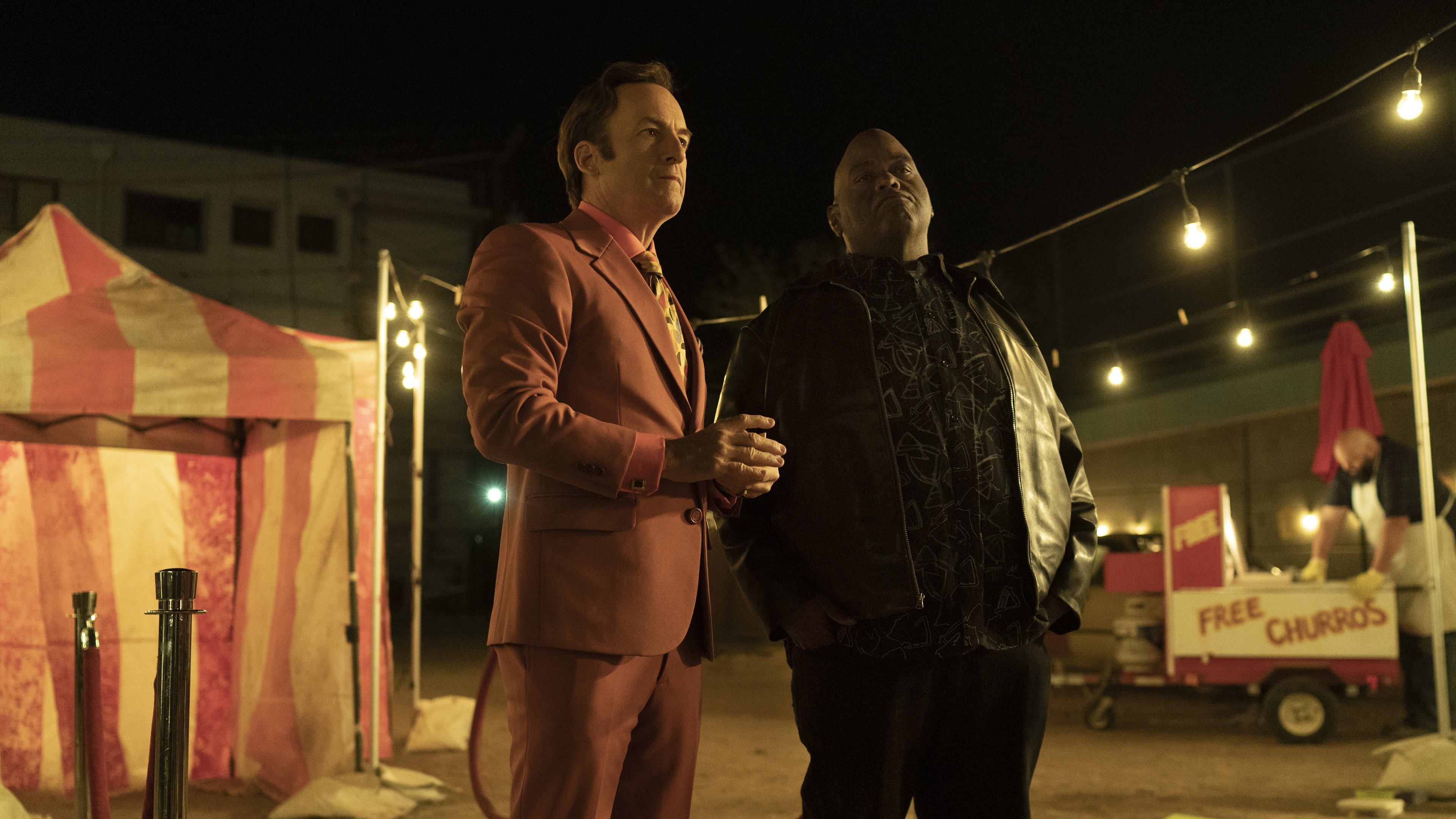

But the dribs and drabs we’ve gotten of Omaha Gene are replaced in “Nippy” by a full black-and-white episode that offers a welcome reprieve from the Albuquerque pressure cooker in which we’ve been spending most of our time.

The world of Gene Takovic has always been in black and white, which seems appropriate for the location since Alexander Payne’s excellent 2013 comedy-drama Nebraska is shot the same way. Being Gene Takovic - lonely, humbled, paranoid, constantly monitoring the police scanner in his bachelor pad - is even worse. Being Jimmy McGill meant first living in the shadow of his accomplished and ethically unimpeachable brother, Chuck, and later losing Kim Wexler, the woman he loves, over mistakes they made together. At the same time, though, Jimmy likes being Saul, and the entire arc of Better Call Saul has been about how playing that role gives him power and helps insulate him from the sad turns that his life has taken. We can think about that as a terrible development because Saul Goodman is what happened when Slippin’ Jimmy slipped all the way, and the results were largely destructive. He’s excited about the high-wire act to come because it takes him away from the workaday dreariness of managing a Cinnabon at a mall in Omaha, Nebraska. (We know he’s enough of a cinephile to be familiar with the film, as he was curled up watching Born Yesterday with Kim when Howard and Lalo stopped by.) Before a department-store burglary that he has meticulously arranged, Gene looks at himself in the mirror and opens up his hands, but there’s not much evidence of Scheider’s world-weariness in that moment. Saul Goodman) pays homage to Scheider in All That Jazz. There is a key moment in “Nippy,” a brilliant and wholly unexpected stand-alone episode of Better Call Saul, when Gene Takovic (a.k.a. It may be his job to choreograph a dazzling show - and Fosse was unquestionably a legend in that regard - but the physical and psychological toll of his lifestyle has become unsustainable. Whenever Roy Scheider’s pill-popping, womanizing, ceaselessly bedraggled choreographer gets ready to do his job in Bob Fosse’s semi-autobiographical classic All That Jazz, he looks at himself in the mirror, opens up his hands to a wave, and says, “It’s showtime, folks!” The expression is oftentimes ironic and facetious, befitting an entertainer who is on the verge of a nervous breakdown.


 0 kommentar(er)
0 kommentar(er)
